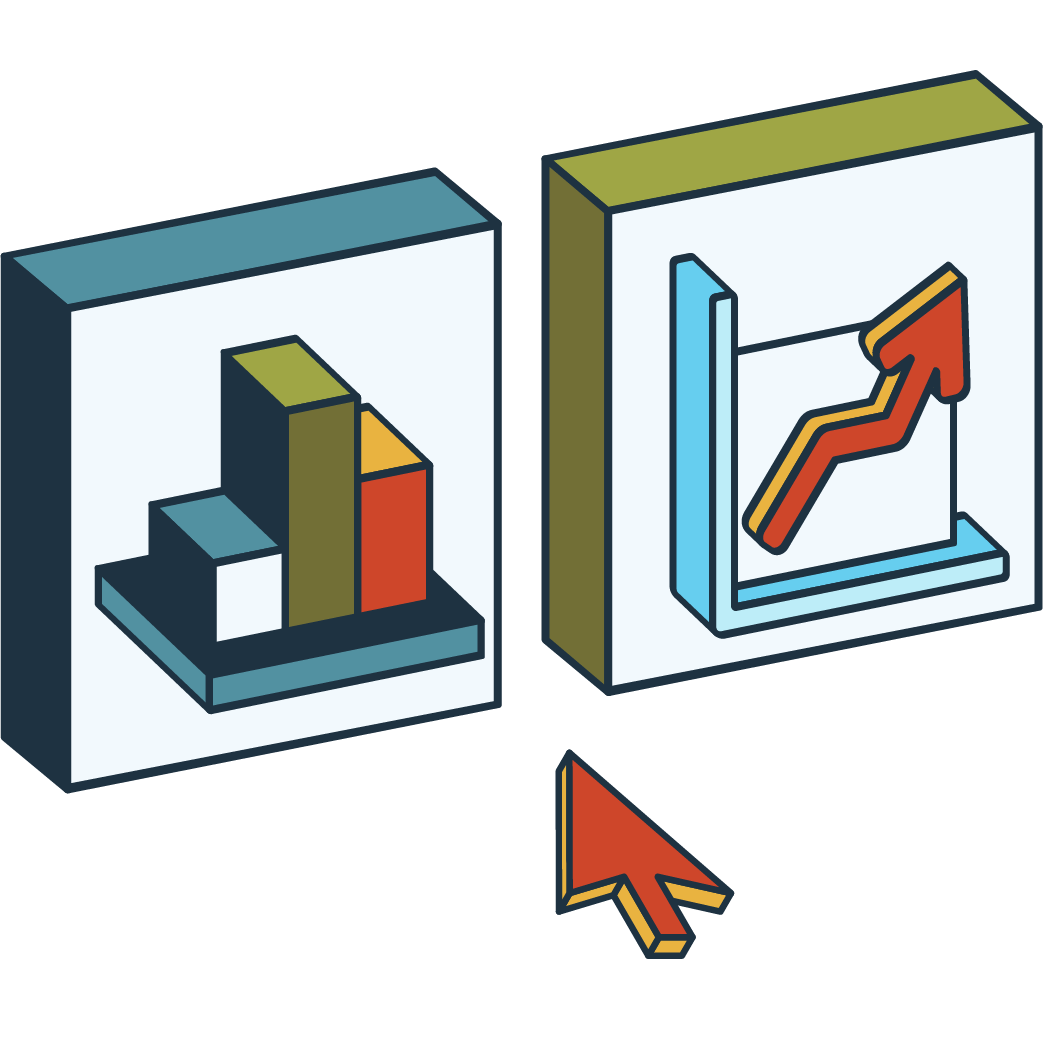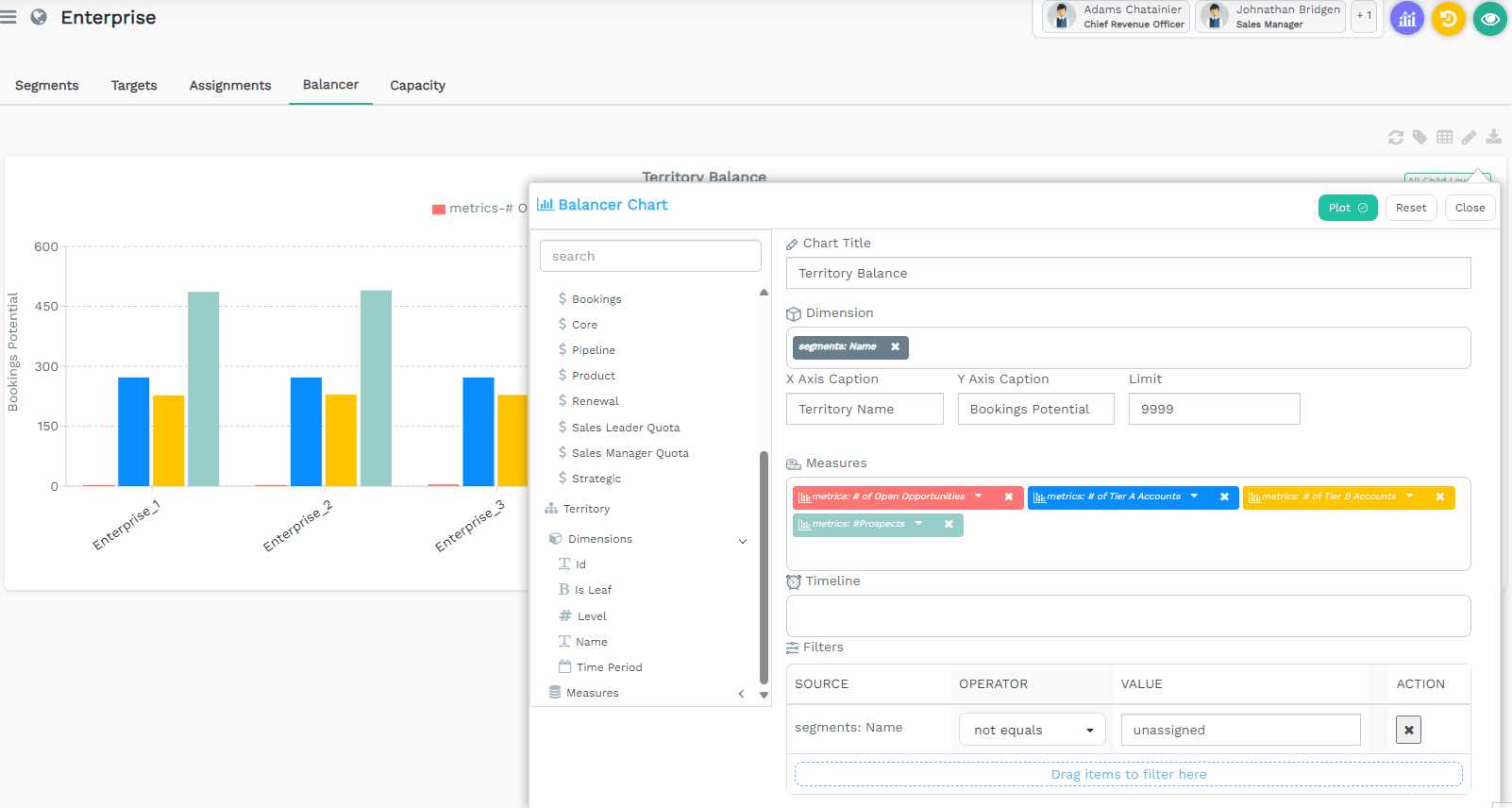 Customize reports from within your territory, team, or product plan. Pin your reports to dashboards in the Reports module.
Customize reports from within your territory, team, or product plan. Pin your reports to dashboards in the Reports module.
Reports in Fullcast are distinct from other BI tools in two important ways. First, it is directly linked to the structure of your team, territory, product plan or scenario. Second, it provides chart types that are tailored specifically to RevOps needs.
Data sources and types
When you build reports, understand where the data is coming from and what types of data you can access.
Data sources
All the potential sources of data that you can leveraged through charts include:
Raw entities: Data imported from various lines of business applications or transaction (OLTP) systems, such as a CRM, financial, or point of sale system into the design application to use for planning.
Go-to-market entities: Data that is created within the design module, such as territories, assignments, targets, and custom metrics.
Refer to create a new entity in Fullcast.
Data types
Charts organize data according to the entity, object, then dimensions and measures:
Dimensions: Qualitative values (such as names, labels, regions, or dates) used to categorize, segment, and reveal the details in your data. Dimensions affect the level of detail in the view and appear on your x-axis.
Measures: Numeric or quantitative values (such as sales revenue) used to measure, aggregate (SUM, average, and so on), and use in mathematical functions. Measures appear on your y-axis.
Analytical tools
Customize your data for analysis in various ways:
Summary metrics
Summary metrics are calculated fields that leverage both GTM entities and raw entities. These are constructed based on your own needs to reflect specific KPIs that your organization tracks. Some common summary metrics include number of accounts, ARR, and bookings potential.
Refer to Summary Metrics and Add Metrics to the Summary Panel for more information.

Charts
Charts provide a lot of flexibility to bring together the data you need to answer specific questions. You can build robust graphs or tables and customize them to meet your needs. When you select a graph presentation, you can select which axis each dimension or measure is on, time periods, and more. You can also select to view the data in a table.

Reports
Reports are geared to a more specific strategic task. They have fewer inputs and provide a bit more guidance on what they can do.

Configure data
In addition to selecting dimensions and measures, there are a few more aspects of a chart that define the data being used:
Constraint | Description |
|---|---|
Timeline | The timeline constraints the measures plotted in the chart by a specific time period.
|
Filters | Filters restrict the data shown in the chart to match the conditions you specify. You can add multiple rows to filter in the chart builder. |
Limits | Limits restrict the number of dimensions plotted in the graph. For example, if you're sorting by territory name and only want to plot five territories, set the limit value as |
Customize measures
Configure the following attributes on your measures:
Attribute | Description |
|---|---|
Aggregation | Aggregate the measure for each group:
|
Axis | Use different y-axes to display measures with different units—select between primary or secondary. |
Sort Order | Plot measure values in ascending or descending order. If there are multiple sort orders specified, only the first one is used. |
Type | Select the chart type to display your data:
|
Color | Use the color palette to customize the graph color for each measure. |
Access reports and dashboards
There are two different places to view reports in Fullcast. While the motion module allows you to access all of our charts and report types and pin them to dashboards, the design module also provides important reporting capabilities.
Reports: The primary place to view data for analysis where you can create dashboards that bring together all the variety of charts, reports, and summary metrics available in Fullcast.
Territories: Use the balancer tab to create GTM charts specifically geared toward viewing and tweaking the balance of territories during the territory planning process. Additionally, you can pin summary metrics to your view in the territory designer.
